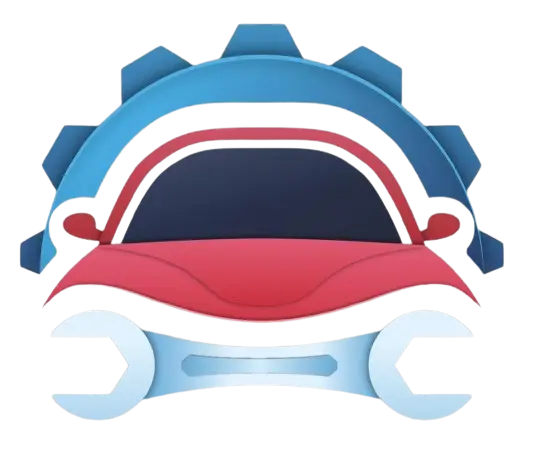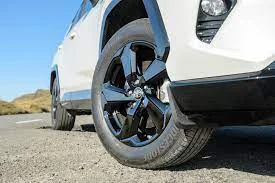Maintaining correct tyre pressure is crucial for the safety and performance of your Toyota Aygo. It’s not just about avoiding flat tyres – underinflated or overinflated tyres can impact everything from fuel efficiency and handling to tyre wear and tear.
So, buckle up as we guide you through the essential knowledge of keeping your Aygo’s tyres optimally inflated:
Why Tyre Pressure Matters
- Safety: Proper pressure ensures optimal grip and handling, allowing for safe and predictable maneuvering, especially during braking and cornering. Underinflated tyres can lead to blowouts and compromised responsiveness, while overinflated tyres reduce road contact, affecting stability.
- Fuel Efficiency: Properly inflated tyres offer lower rolling resistance, meaning your engine works less, translating to better fuel economy. Underinflated tyres increase friction, guzzling more fuel for every kilometer.
- Tyre Wear: Correct pressure distributes wear evenly across the tyre tread, maximizing its lifespan. Underinflated tyres wear prematurely on the shoulders, while overinflated tyres wear down the center quicker.

- Comfort: Properly inflated tyres provide a smoother ride, absorbing bumps and road imperfections effectively. Underinflated tyres feel sluggish and bouncy, while overinflated tyres transmit every bump directly to the cabin, making for a rough ride.
| Benefit | Impact of Correct Pressure | Impact of Under Inflated Tyres | Impact of Overinflated Tyres |
| Safety | Optimal grip and handling for safe maneuvering, especially during braking and cornering. | Increased risk of blowouts; compromised responsiveness leading to accidents. | Reduced road contact affecting stability; potential loss of control. |
| Fuel Efficiency | Lower rolling resistance for better fuel economy. | Increased friction leading to higher fuel consumption. | Slightly improved, but negligible compared to safety and wear concerns. |
| Tyre Wear | Even wear across the tread, maximizing lifespan. | Premature wear on shoulders, reducing lifespan and requiring replacements. | Rapid wear down the center, compromising performance and safety. |
| Comfort | Smoother ride, absorbing bumps and imperfections effectively. | Sluggish and bouncy ride, transmitting every bump to the cabin. | Harsh and uncomfortable ride, feeling every road irregularity. |
Finding the Right Pressure
Your Toyota Aygo’s recommended tyre pressures are listed on a sticker inside the driver’s door jamb or in the owner’s manual. Remember, these are the cold tyre pressures, measured before driving or when the tyres haven’t been exposed to sunlight for several hours.
| MODEL | TYRE SIZE | PRESSURE FRONT | PRESSURE REAR |
| Aygo X | 175/65 R17 | 2.6 bar or 37 psi | 2.4 bar or 35 psi |
| Aygo X | 175/60 R18 | 2.6 bar or 37 psi | 2.4 bar or 35 psi |
Checking and Adjusting Pressures
- Invest in a good quality tyre pressure gauge.
- Unscrew the valve cap from each tyre.
- Press the gauge firmly onto the valve stem until it hisses and stops.
- Compare the reading with the recommended pressure.
- If the pressure is low, inflate the tyre using a foot pump or air compressor.
- Recheck the pressure and adjust if necessary.
- Repeat for all four tyres, including the spare.
- Remember to screw the valve caps back on securely.
Tips for Consistent Tyre Pressure
- Check your tyre pressures at least once a month, especially before long trips or if the weather changes significantly.
- Consider investing in a Tyre Pressure Monitoring System (TPMS) for real-time pressure monitoring.
- Adjust pressures slightly higher for heavily loaded vehicles or high-speed driving.
- Don’t forget to check the pressure in your spare tyre!
By maintaining the correct tyre pressures, you’re not just ensuring the safety and performance of your Toyota Aygo, but also saving money on fuel and tyre replacements. So, keep your tyres pumped up and your Aygo rolling safely down the road!
Conclusion
By maintaining the correct tyre pressures, you’re not just ensuring the safety and performance of your Toyota Aygo, but also saving money on fuel and tyre replacements. So, keep your tyres pumped up and your Aygo rolling safely down the road!
FAQs
- Q: What happens if I drive with underinflated tyres?
- A: Under Inflated tyres increase the risk of blowouts, reduce fuel efficiency, and wear unevenly.
- Q: What happens if I drive with overinflated tyres?
- A: Overinflated tyres can reduce grip and handling, make the ride uncomfortable, and wear down the center of the tread prematurely.
- Q: Can I use a regular pump to inflate my tires?
- A: Yes, you can use a foot pump or air compressor to inflate your tires. However, ensure you have a good quality pressure gauge to check the pressure accurately.
- Q: How often should I replace my tires?
- A: The lifespan of your tires depends on how much you drive, the road conditions, and your driving habits. Generally, tyres should be replaced every 5-7 years or when the tread depth reaches the legal limit.

